When the word “kiwi” springs to one person’s mind, it evokes the image of a nutritious fruit, whose flavor combines sweetness, sourness, bitterness, and astringency. Moreover, it is remarkable for its high content of vitamin C, fiber, and potassium, which are beneficial for immune system function, digestive health, blood sugar regulation, and cholesterol-lowering.
Therefore, it’s thrilling to think of growing this great fruit in pots, picking it with your own hand and enjoying it in salads, smoothies, and desserts. With our step-to-step guide, it will be easier than ever for you to grow kiwi in a pot.
1. Choose the Right Variety
There are many kiwi varieties that are well-suited for container cultivation. Miniature or dwarf varieties are ideal for pots:
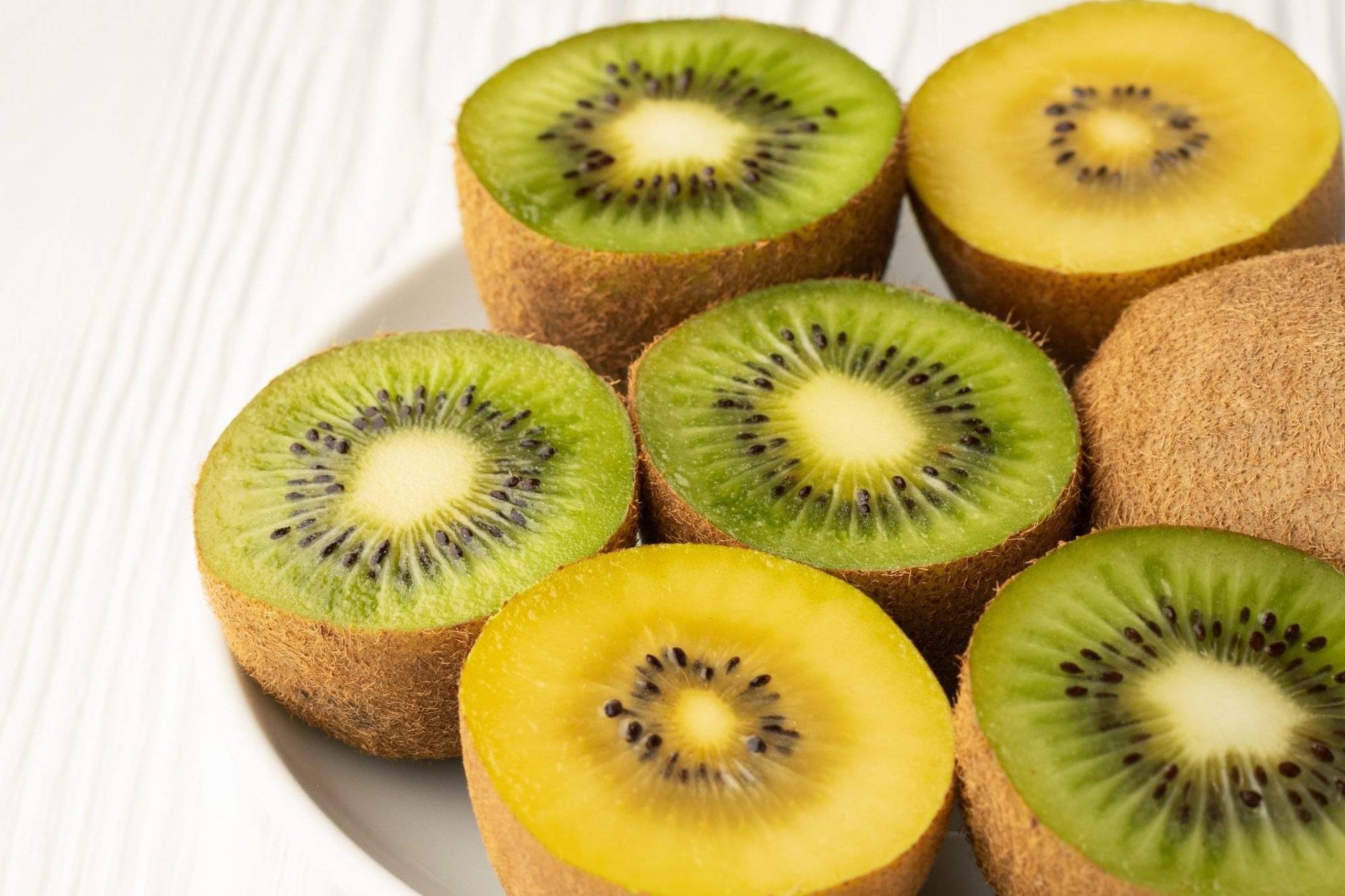
- Ananasnaya: This is a hardy kiwi variety that produces grape-sized, aromatic fruits with smooth skin. It can tolerate cold temperatures down to -25°C and has a high yield.
- Issai: This is a cocktail kiwi variety that is self-fertile and does not need a male pollinator. It has small, sweet fruits with smooth skin that can be eaten whole.
- Dumbarton Oaks: This is another hardy kiwi variety that has large, flavorful fruits with smooth skin. It can withstand cold winters and has a very high yield.
2. Select a Suitable Pot
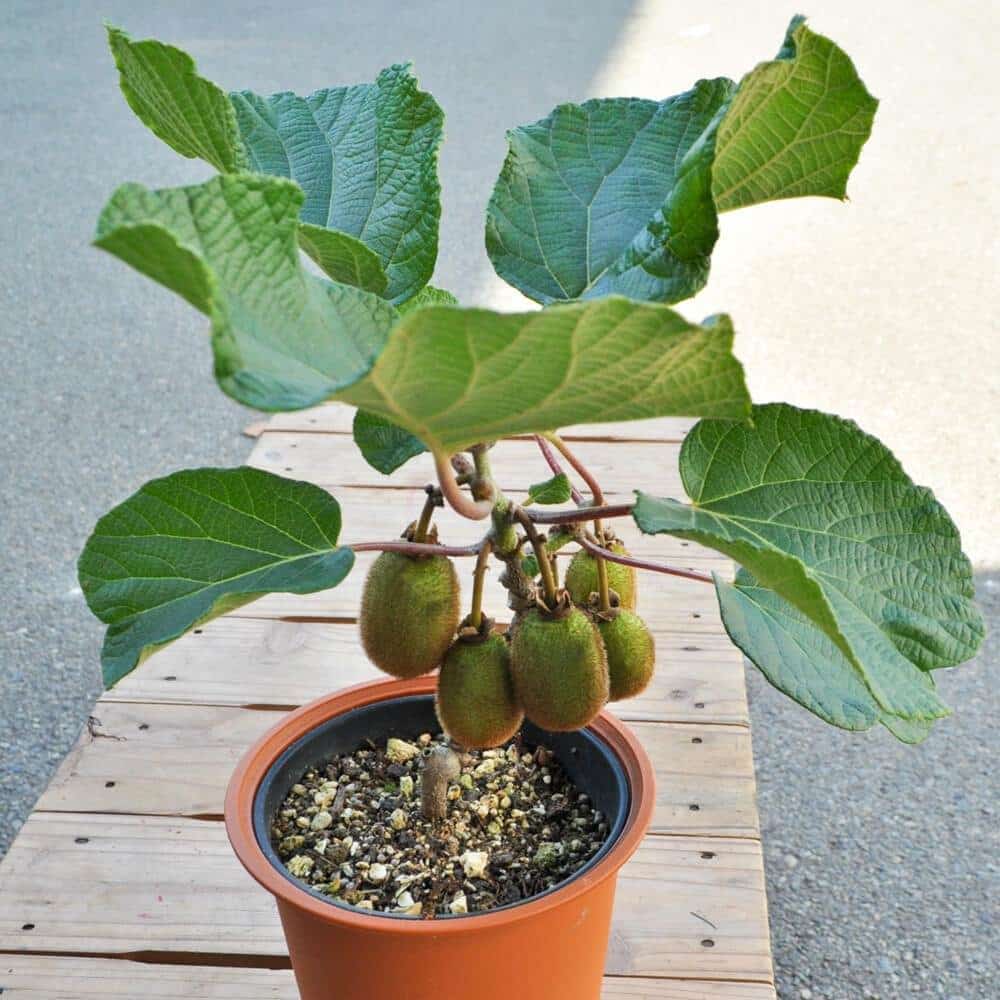
Choose a large pot with good drainage. A 20-gallon container is a good starting point.
3. Planting
Start your planting journey with a pot with a well-draining potting mix, preferably a mix suitable for fruit trees. Afterwards, plant the kiwi tree at the same depth as it was in its nursery container, about 12-14 inches.
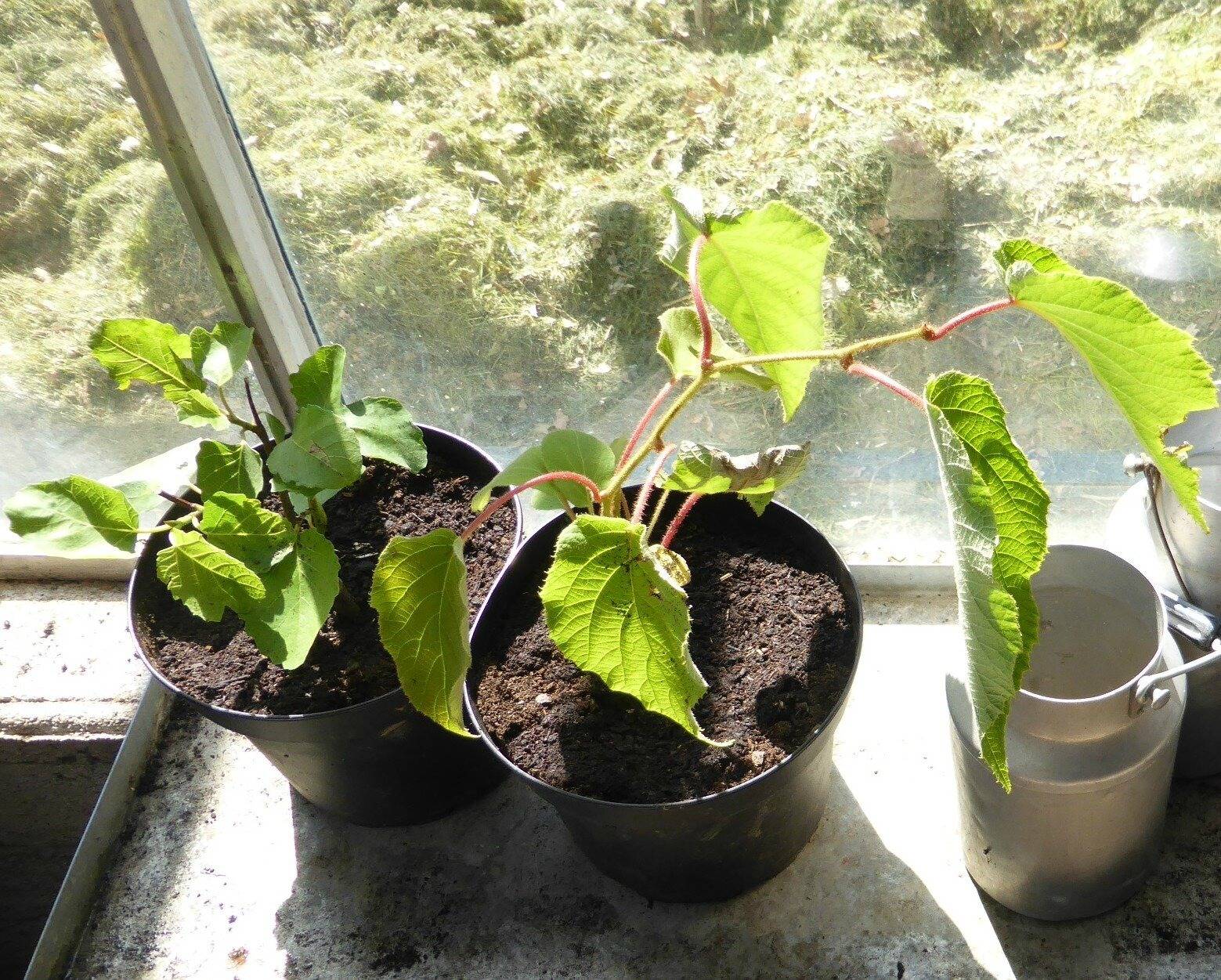
Kiwi vines need strong support because they can reach lengths of 25 to 30 feet, so they can hold their weight. Therefore, you should install a sturdy trellis system or teach them to climb a patio wall. A sizable balcony or rooftop can also be used to cultivate kiwis.
4. Location
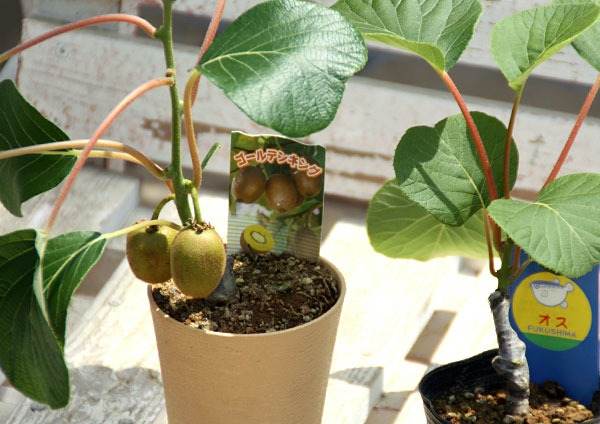
Kiwi tree requires full sun exposure to grow healthily, so place the pot in a location that receives full sun for at least 6-8 hours a day.
5. Watering
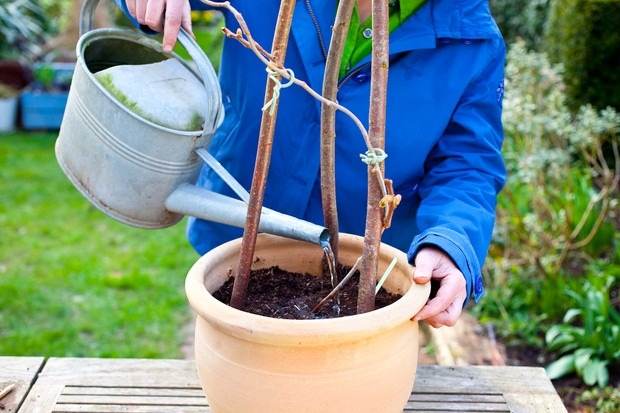
Kiwi trees are sensitive to both drought and waterlogged soil, so the key is to keep the soil consistently moist but not waterlogged.
Water deeply when the top inch of soil feels dry. Use a saucer under the pot to catch excess water and prevent root rot.
6. Fertilizing
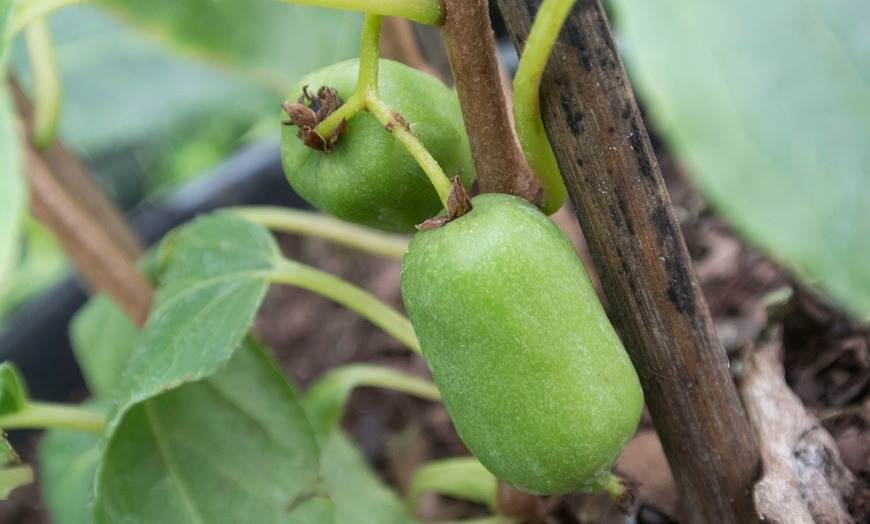
In early spring, fertilize the kiwi tree with a balanced, slow-release fertilizer. Additionally, provide a dose of compost or well-rotted manure annually.
7. Pruning
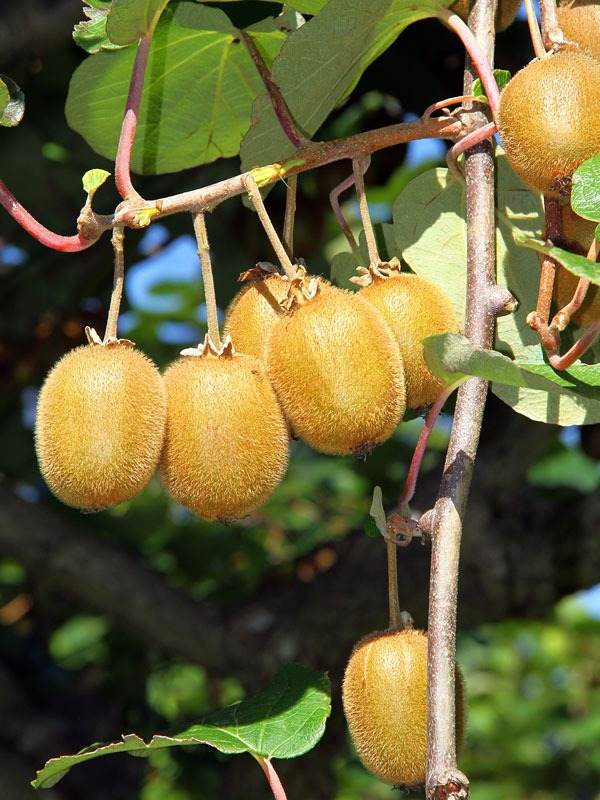
Regularly prune the kiwi vine to maintain its size and shape. Pruning also encourages fruiting.
8. Pollination

Kiwi trees are typically dioecious, which means they have separate male and female plants. You’ll need at least one male plant for pollination if you have female plants.
9. Pests and Diseases
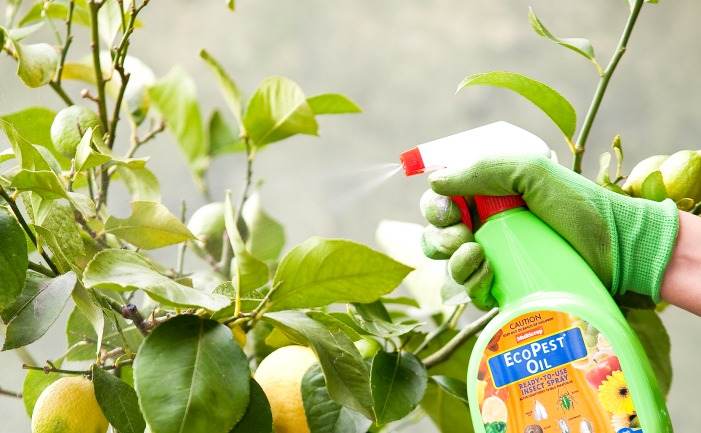
Kiwi are rarely attacked by pests or diseases. To deal with common pests like aphids and scale insects, use insecticidal soap if necessary.
Kiwi vines can be prone to diseases like powdery mildew and bacterial canker, so ensure good air circulation and avoid overhead watering.
10. Harvesting
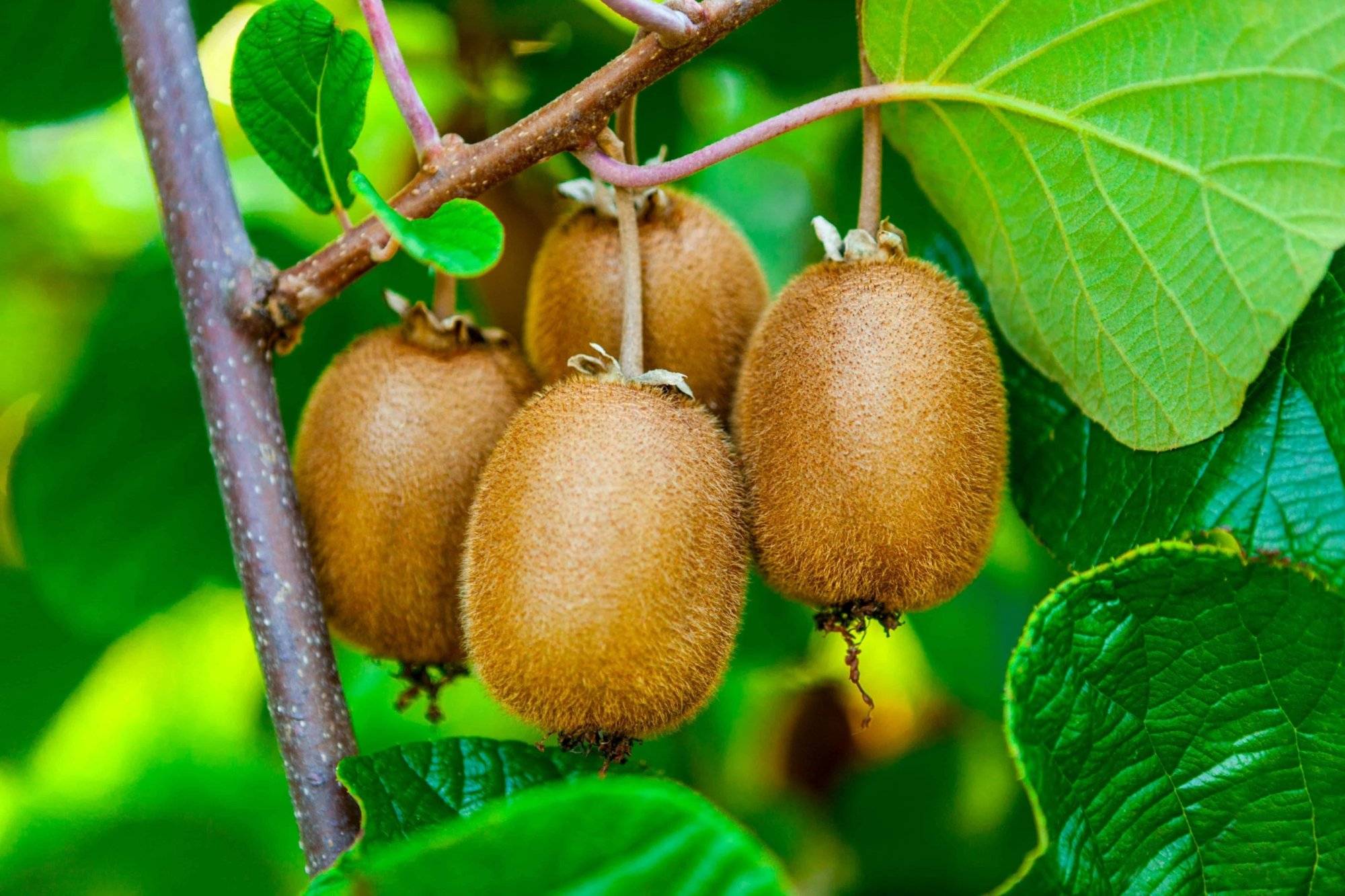
Kiwi fruits are ready for harvest when they are firm but slightly yielding to touch. They will continue to ripen after being picked. When harvesting, cut the fruit from the vine rather than pulling to avoid damaging the plant.
Cultivating a kiwi tree in a pot can be rewarding, but it requires careful attention to its needs. By providing the right growing conditions, proper care, and protection, we hope you can enjoy homegrown kiwi fruits even in limited spaces.
